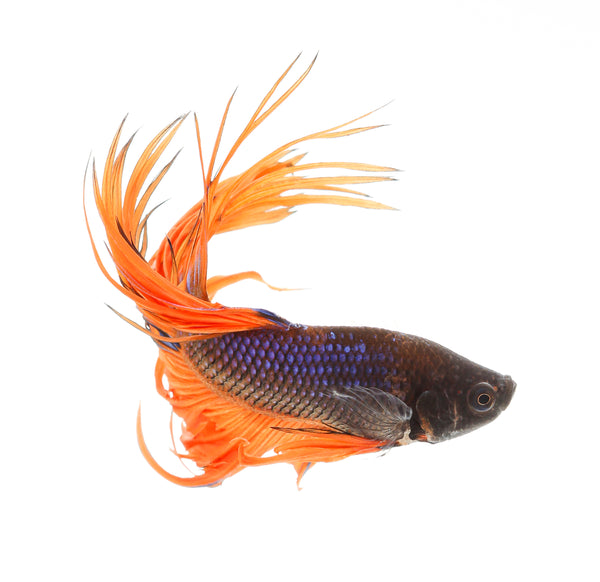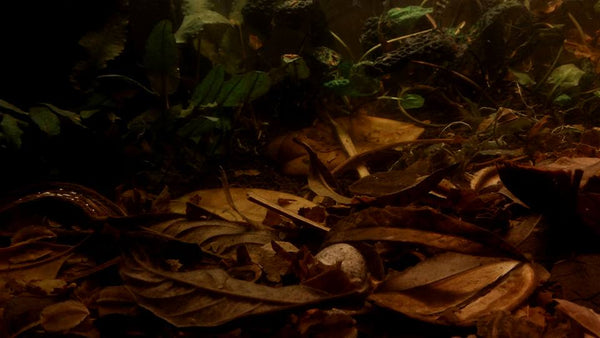- Continue Shopping
- Your Cart is Empty
Beyond the "Betta Bowl" fantasy...
If you're like many fish geeks, at one time or another, you've probably kept at least one Betta at some point in your "career." Most likely, a "fancy" variety, purchased in a little cup, and then unceremoniously added to a little bowl somewhere.

Until relatively recently, this was my impression of Bettas in the aquarium hobby. One species (B. splendens), small bowls and cups, and improperly kept, dangerously inbred, low-quality fish found by the million at "big box" pet stores. And of course, for the longest time, I believed that these fish favored the confining, decidedly not-so-good environment of a small container of water.
And, how could you fault me? That's kinda how they've been "sold" to the world for generations...

Sadly, the cultural myth of Bettas being adapted to this kind of micro-environment has endured in both the hobby and popular culture, and we're all pretty much convinced that they live exclusively in little tiny puddles in Thailand, Cambodia and other parts of Southeast Asia.

And the sad part is that there is a little hint of truth to this. Sure, they are found in little puddles and evaporating pools of water along roads, ditches, and rice paddies...but it's kind of out of their excellent survival capabilities, clinging to life in evaporating puddles, rather than out of some innate preference for tiny spaces. They have good jumping capabilities for a reason, right? I'd venture to guess that it's to help escape from these little tight spots when the water gets really nasty!

And of course, because they're often seen in their native habitats in these little puddles and such, and are extremely adaptive to survive (not the word- "survive") such tight spaces with lower water quality...and we hail their remarkable ability to tolerate the nasty conditions found in these desiccating tracts of water, because of their "labyrinth organ." And by extension, we can use this to justify the fact that they are kept in smaller bowls and such by hobbyists of all skill levels. It's almost like they're perceived by many of us non-specialists to be just like annual killifish, ecologically adapted to live in evaporating puddles as part of their life cycle, when the reality is that these fish can live for 5 years or more with proper care!
Oh, and there are like 70-plus recognized species in the genus Betta!

Now look, before every world class Betta breeder who's forgotten more about the care of these fish than I'll ever know jumps on me and tells me that I'm drinking some "Tree Hugger Koolaide" or something (someone told me that once, lol), I'll acknowledge that, of course, they can be kept in small containers when given excellent care. Hobbyists have been doing it that way for generations. Yet, what I kind of wonder about is how come we- the non-Betta specialists, are still buying into the 'fairy tale" that this is the best way to keep them because it's the fish's preferred environment...Just because we can keep them this way doesn't mean it's the proper thing for the fish, right?

When you dig a little deeper, as many experienced Betta enthusiasts have, you find out that they generally come from much larger, more permanent, and thickly vegetated habitats. Little pools of water, rice paddies, sluggish streams, and small marshes choked with vegetation, leaves, branches, etc.

Of course, this is where my interest comes in...They are often found in habitats that are just like the ones we play with: Tannin-stained, botanical-packed, and uniquely interesting!

And of course, there are a LOT of different species of these fish, as many of you know, and some have adapted to different types of niches, like under leaves and submerged branches, etc.

And of course, it's kind of hard to replicate this habitat in a tiny cup of water, so why not set up an aquarium just for them?

Something with some small rocks, wood, and a lot of leaves and sturdier botanicals!
And you might want to experiment with a pure "botanical bottom" of mixed leaves and some of the smaller seed pods and such, to really create a more accurate portrayal of the surprisingly diverse habitats from which these fishes come.

Our friend Mike Bognich has been doing a lot of work with deep leaf litter bottoms, and I suspect these would work well with a variety of wild Betta species.

Kenneth Kinchen has shared with us a number of cool shots of his wild Betta botanical-style aquariums, and these are perfectly suited to these unique fish!

And our buddy Ron Mastero and his son Nate, of Functionbuilt Aquatics have done some incredible paludarium-type tanks just for wild bettas, and his fish room is filled with blackwater/botanical "sexiness!"

The variety of Betta species is so incredible, each with unique color patterns, morphology, and requirements that you might just devote a bunch of tanks to them...a really fascinating hobby within a hobby!

Hopefully, this embarrassingly generalized, incredibly short visit to the "alt Betta" world may have provided you with some incentive to look more closely at these captivating fishes, and to keep them in far more natural, interesting conditions than you may have previously even considered.

Hopefully, the "Betta Bowl" of the 21st century will be a properly-outfitted small aquarium with filtration, heat, botanicals, blackwater, and plants, a far cry from the popular, yet shockingly one-dimensional way we've kept these fishes for so many years.
Learning new things about fishes that you may have taken for granted is not only humbling, it's fascinating, enjoyable, and makes you realize just how awesome the aquarium hobby really is!
Keep exploring.
Stay fascinated. Stay curious. Stay creative. Stay skeptical.
And Stay Wet.
Scott Fellman
Tannin Aquatics
1 Response
Wolfman Jenkins
As for me I’m looking to challenge anyone that has Cambodian bettas long or short fin I will soon have a bettafish called the MUHAMMAD ALI fighter betta his color will be red. So anyone that has Cambodian bettas I’m looking for a bettafight.








Scott Fellman
Author